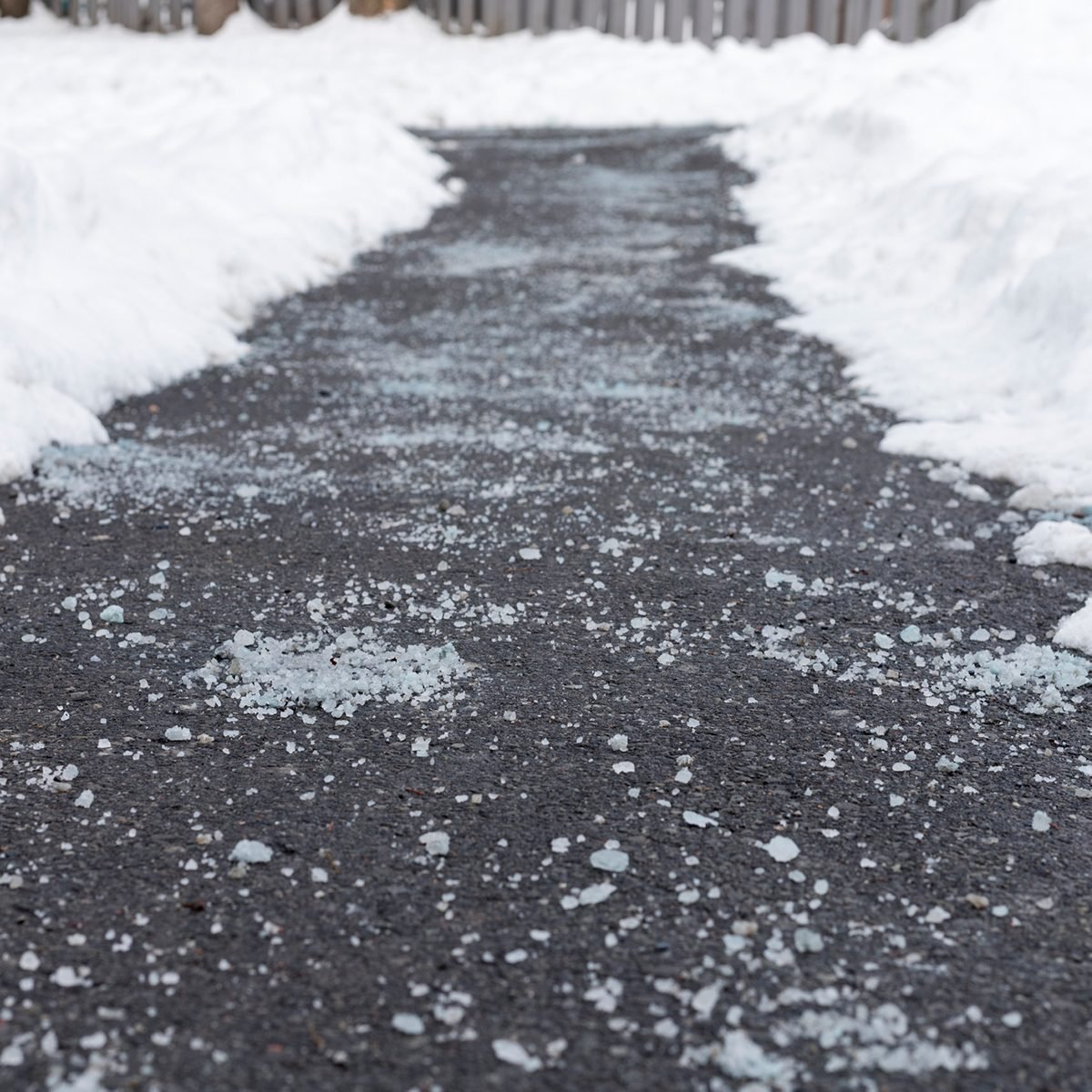Use heat to combat snow and ice on your driveway and walkways.

What to Know About Snow Melt and Deicing Systems

There are plenty of residential snow and ice melt products. You can spread rock salt or liquid ice melts, but some have negative effects on your home and the environment, and you’ll need to keep them in stock all winter long. If you’re unsatisfied with traditional ice melt methods, a deicing system might be the answer you’re looking for.
On This Page
Snow Melt and Deicing System Options
There are two types of residential deicing systems: radiant heat systems and removable floor mats. Both have gained popularity in recent years.
Heated driveways and heated floors use radiant heat systems. Radiant heat systems are electric or hydronic, meaning they use electricity or water to provide heat. Electric systems may use cables, similar to roof deicing cables, or mats to run electric heat beneath your driveway, while hydronic systems use PEX and a boiler. Both styles are installed under the surface you want to heat, creating a permanent solution that doesn’t detract from your landscaping.
Although more expensive than a snow shovel, heated floor mats like the HeatTrak Heated Snow Melting Walkway Mat is an affordable deicing option. These are basically rugs that plug into an outdoor outlet. HeatTrak’s mats can be left outside all winter. When turned on, they stay 40 degrees warmer than the outside temperature and melt two inches of snow per hour. Leave them on until the meltwater evaporates to prevent refreezing of wet mats.
Pros and Cons of Each Snow Melting System
Radiant heat deicing systems and snow melting mats serve the same purpose, but they are different products. Knowing the pros and cons will help you decide which is right for you.
Radiant Heat System Pros
- No seasonal storage and installation;
- No visual clutter;
- Long-term solution.
Radiant Heat System Cons
- Expensive — expect to pay between $12 and $21 per square foot, according to HomeAdvisor, or an average of $3,892 for the heating element alone;
- May require tearing out and replacing your current driveway;
- More difficult repairs.
Floor Mat Pros
- Easy to install without a professional;
- Inexpensive — sidewalk mats are typically under $200, and HeatTrak’s driveway mats are all under $2,500;
- You can bring them with you if you move.
Floor Mat Cons
- Take up storage space in the summer;
- Need to be cleaned at the end of the season;
- May be considered unsightly.
Deicing System Installation Process
If you decide to get a radiant heat system, it’s easiest to install while you’re already replacing a driveway or sidewalk. HomeAdvisor says that in some situations tubing may be run beneath an existing driveway, but the system’s warranty might be nullified. Typically, electric cables or PEX must be placed in a new driveway before the surface is poured. With a hydronic system, you’ll also need to install a boiler if you don’t have one already.
Snow melting mats barely have an installation process at all. Simply take them out of the box, roll them out and plug them into an outdoor outlet. Your mats can stay plugged in, but you should turn them off when not in use. To make things easier for yourself, you could wire the outlet to a switch.



















